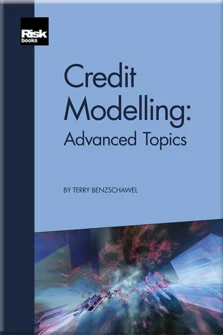Beating Credit Benchmarks
Beating Credit Benchmarks
Credit Models Past and Present
Credit Models: Looking to the Future
Predicting Annual Default Rates and Implications for Market Prices
An Ensemble Model for Recovery Value in Default
The Corporate Bond Credit Risk Premium
The Credit Default Swap Risk Premium
The Municipal Build America Bond Risk Premium
Predicting Bank Defaults
Beating Credit Benchmarks
Hedging the Credit Risk Premium
Managing Pension Fund Liabilities
Credit Cycle-dependent Stochastic Credit Spreads and Rating Category Transitions
Managing Systemic Liquidity Risk: Systems and Early Warning Signals
The performances of portfolio managers and other investment professionals are often assessed relative to pre-specified benchmark portfolios. Since the early 2000s, we have been exploring ways to help investors beat return targets using model-based measures of credit risk and relative value. In this chapter, we will describe a procedure, called the cut-and-rotate (C&R) method, which is based on estimates of PDs and relative value obtained from structural models of credit risk.11We used Moody’s KMV model, a commercially available product, for our original studies (Crosby, 1999; Kealhofer and Kurbat, 2001) and later acquired Sobehart and Keenan’s (2002, 2003) HPD model. Both models use information from the equity market, along with balance sheet and income statement information, to assess the default risk of public firms. The C&R procedure has evolved from an initial study of credit picking “robots” in 2003. That is, several different automated credit selection algorithms were used to construct portfolios using model-based PDs and yields from bonds in investment-grade and high-yield credit
Copyright Infopro Digital Limited. All rights reserved.
As outlined in our terms and conditions, https://www.infopro-digital.com/terms-and-conditions/subscriptions/ (point 2.4), printing is limited to a single copy.
If you would like to purchase additional rights please email info@risk.net
Copyright Infopro Digital Limited. All rights reserved.
You may share this content using our article tools. As outlined in our terms and conditions, https://www.infopro-digital.com/terms-and-conditions/subscriptions/ (clause 2.4), an Authorised User may only make one copy of the materials for their own personal use. You must also comply with the restrictions in clause 2.5.
If you would like to purchase additional rights please email info@risk.net











